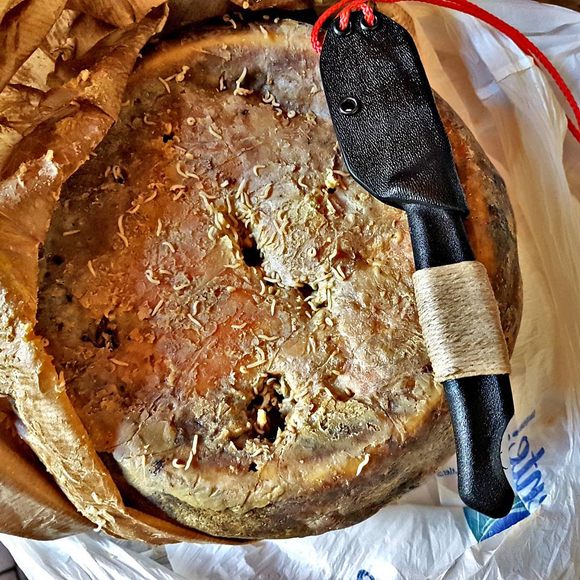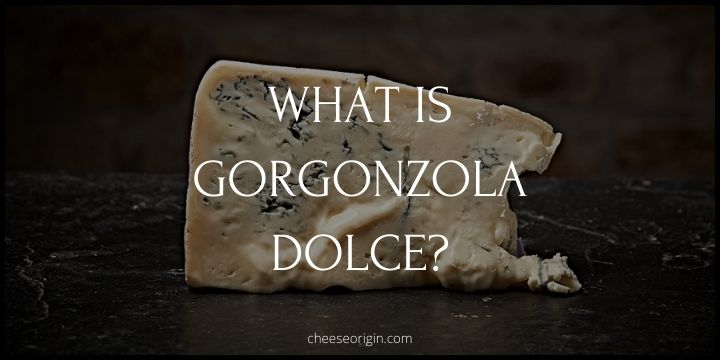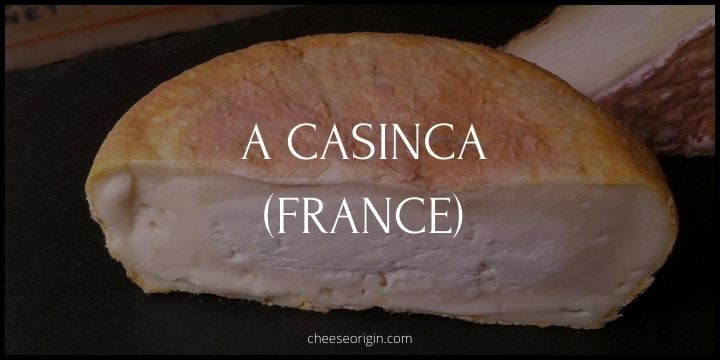What is Casu Marzu? Italy’s ‘Maggot Cheese’ Delicacy

In the heart of the Mediterranean, on the sun-kissed island of Sardinia, lies a culinary secret as fascinating as it is controversial. It’s a cheese so daring, so unique, that it’s garnered the title of ‘The World’s Most Dangerous Cheese’. This is no ordinary dairy product – this is Casu Marzu, a delicacy that dances on the razor’s edge of danger and delight.
This cheese isn’t merely aged, it’s fermented to a point where most would deem it decomposed aka ‘maggot cheese’.
It’s a cheese that challenges the boundaries of conventional gastronomy, pushing the limits of what we perceive as edible, let alone delectable.
But for the Sardinians, it’s a testament to their history, their resilience, and their love for bold flavors.
Embark with us on an intriguing journey into the world of Casu Marzu, where we’ll unravel the mysteries behind its creation, explore its rich cultural significance, and delve into why it’s considered the world’s most dangerous cheese.
Whether you’re a daring foodie or a curious reader, prepare yourself for a tale that’s sure to leave your senses tingling and your curiosity piqued.
Quick Facts About Casu Marzu (Maggot Cheese)
| Fact | Description |
|---|---|
| Origin | Sardinia, Italy |
| Milk Source | Sheep’s milk |
| Texture | Soft and creamy |
| Flavor | Strong and very distinctive, somewhat akin to Gorgonzola |
| Color | Pale with translucent larvae |
| Aging Process | The cheese is left outside, allowing the cheese fly (Piophila casei) to lay eggs inside it. The larvae then break down the cheese fats, making it soft and creamy |
| Legality | Due to health considerations, Casu Marzu is considered illegal in the European Union |
| Historical Origins | The practice of consuming insect-fermented foods dates back thousands of years |
| Uses | Typically spread on flatbread and paired with a strong red wine |
What is Casu Marzu aka Maggot Cheese?
Casu Marzu, also known as maggot cheese, is a traditional Sardinian cheese made from sheep’s milk. What makes this cheese unique and somewhat controversial is the way it’s aged.
The cheese is left outside to allow cheese flies (Piophila casei) to lay eggs in it. These eggs then hatch into larvae, which consume the cheese and break down its fats, causing the cheese to ferment and giving it a soft, creamy texture.
The cheese is consumed while the larvae are still alive, hence the name “maggot cheese”. The taste is described as being strong and distinctive, with a flavor somewhat similar to Gorgonzola.
Due to health concerns related to consuming live maggots, Casu Marzu is considered illegal by the European Union. However, it is still made and consumed in certain parts of Sardinia.
Why and How is Casu Marzu Dangerous?

This unique Sardinian delicacy poses potential health risks due to its unconventional production process, which involves deliberate infestation with live maggots.
The danger lies primarily in the fact that these maggots can survive the acidic environment of the human stomach after consumption. If ingested alive, they can burrow into the intestines, leading to a condition called myiasis, a parasitic infection caused by the larvae of certain species of flies. This condition can cause severe abdominal pain, nausea, and other complications.
Moreover, Sardinian aficionados deem the cheese unsafe to eat when the maggots have died. This is because the death of the maggots could indicate that the cheese has become toxic.
Despite these risks, Casu Marzu continues to be a sought-after delicacy due to its unique flavor profile and cultural significance. However, due to the potential health risks, it has been declared illegal by many food safety authorities (source).
It’s important to note that while Sardinians have been consuming Casu Marzu for centuries, it’s still considered a risk to those unfamiliar with its proper preparation and consumption. This daring culinary adventure is certainly not for everyone, but it offers a fascinating glimpse into the diverse and sometimes daring world of gastronomy.
What can Casu Marzu do to you?
Here are some of the potential side effects of eating Casu Marzu:
- Intestinal Lesions: The maggots in Casu Marzu can settle into the intestines and create painful and potentially dangerous lesions.
- Stomach Problems: Consumption of this cheese can lead to stomach upset, cramps, and diarrhea. In some cases, the diarrhea may contain blood.
- Vomiting and Fever: Some individuals may experience vomiting and a slight fever, usually less than 101°F.
- Myiasis: This is a parasitic infection caused by the larvae of certain species of flies. Symptoms of myiasis in your gastrointestinal tract include stomach upset, vomiting, and diarrhea.
- Skin Sensations: Some individuals have reported symptoms like burning, itching, or crawling sensations on the skin.
- Severe Abdominal Pain: If the maggots survive digestion in the human stomach and travel further into the body, it could result in intense abdominal pain.
Note: while these side effects are possible, they are not guaranteed to occur with every individual who consumes Casu Marzu. Each person’s body may react differently to the cheese.
Casu Marzu Death Rates
There are no specific records or data regarding death rates caused directly by Casu Marzu. According to a CNN report, it’s believed that nobody has died from eating Casu Marzu.
This sentiment is echoed by Paroles de Fromagers, stating that as far as they know, Casu Marzu has never caused anyone’s death.
Casu Marzu Calories
The calories for 100 grams of Casu Marzu cheese:
| Nutrient | Quantity |
|---|---|
| Calories | 350-400 kcal |
Why do people still eat Casu Marzu cheese despite knowing the risks?
Several reasons explain why people still consume this cheese:
- Cultural Significance: Casu Marzu has deep roots in Sardinian culture. It’s a part of their traditional food heritage, much like how blue cheese is enjoyed in other parts of the world.
- Unique Flavor: The cheese is said to have a unique, intense flavor that some people find highly enjoyable. Its taste is described as creamy with a strong, spicy aftertaste.
- Adventure and Novelty: For many, eating Casu Marzu is an adventurous experience. The novelty of consuming a cheese with live maggots can be thrilling and provides a unique culinary story.
- Rarity and Exclusivity: Due to its illegal status in many places, getting hold of Casu Marzu can be challenging, adding to its allure. It’s often sought after by cheese connoisseurs and food enthusiasts who are eager to try rare and unusual foods.
- Pairings: When paired with the right accompaniments like Sardinian bread and robust red wine, it can make for a memorable gastronomic experience.
Does Casu Marzu taste good? Tasting notes
The taste has a resemblance of gorgonzola, but stronger, spicy, with a hint of bitterness.
It is intense, unique and has a strong, spicy flavor that lingers in the mouth. The truth is, the flavor can be quite overwhelming for those not accustomed to it.
The texture of the cheese is very creamy and soft, due to the digestive action of the maggots.
Also, there may be an aftertaste of ammonia.
- Creamy: The taste of Casu Marzu is creamy, intense, but not overly salty.
- Crystallized Bits and Fabulous Texture: There are small crystallized bits within the cheese that contribute to its fabulous texture.
- Spicy and Pungent: The cheese is also known for its spicy, pungent flavor.
- Long-Lasting Aftertaste: Casu Marzu leaves a long-lasting aftertaste that can linger for several hours.
- Intense Notes of Mediterranean Pastures: Beyond the initial flavor, there are intense notes of Mediterranean pastures, contributing to a complex flavor profile.
- Pairings: Traditionally, Casu Marzu is served with freshly-baked bread and Cannonau, a local, intense red wine. The bold flavors of the wine complement the strong taste of the cheese.
It’s important to note that taste is subjective and can vary greatly from person to person. What one person finds delicious, another might find unpalatable.
Therefore, whether Casu Marzu tastes good or not largely depends on personal preference.
Is Casu Marzu expensive?
Yes, Casu Marzu is considered expensive in comparison to many cheeses. It can cost up to $100 per pound.
Here are 3 reasons why Casu Marzu is expensive:
- Rarity and Exclusivity: ‘Maggot cheese’ is a rare and not widely available due to its controversial nature. It’s illegal in many places, including the United States and the European Union, which adds to its exclusivity.
- Cultural Significance: Casu Marzu has deep cultural roots in Sardinia, Italy. It’s part of their traditional food heritage and is considered a delicacy.
- Production Process: The cheese requires a specific type of fly (Piophila casei) for fermentation, and the entire process takes a considerable amount of time, adding to the cost.
Please note that prices may vary depending on the source and location.
Where to try Casu Marzu?
The best place to try Casu Marzu is on the Italian island of Sardinia, where it originates.
However, due to its legal status, it’s not typically available in regular markets or stores. You may need to connect with locals who can guide you to the right places.
What goes well with Casu Marzu? A pairing guide
| Pairing Type | Description |
|---|---|
| Food | Casu Marzu cheese is typically sliced into thin strips and paired with moistened Sardinian bread, also known as pane Carasau. This helps balance the strong flavor of the cheese. |
| Wine | When it comes to wine pairing, Casu Marzu pairs well with robust red wines. Chianti Classico, a rich and full-bodied red wine from Tuscany, is often recommended. However, other Sardinian red wines could be a good match as well. |
Also read: A Comprehensive Guide to Enjoying Cheese Platter with Wine
The Origin and History of Casu Marzu
Casu Marzu, also widely known as ‘maggot cheese,’ has been a staple in Sardinian culture for centuries.
The cheese was typically made by sheep farmers using their sheep’s milk, a testament to the island’s rich pastoral tradition. Despite its controversial nature, the cheese holds an esteemed place in Sardinian society, often served during special occasions and festive gatherings.
The history of Casu Marzu dates back to the time of the Roman Empire, indicating its long-standing presence in the Mediterranean culinary scene. However, the exact origins remain shrouded in mystery due to the lack of specific dates or mentions in historical documents.
This distinctive cheese is known for its unique preparation process, which involves leaving Pecorino cheese outside to allow cheese flies to lay eggs inside it. The larvae from these eggs help accelerate the fermentation process, resulting in a creamy-textured cheese with a strong flavor.
However, despite its local popularity and cultural significance, Casu Marzu has been deemed illegal by many food safety authorities due to health concerns associated with consuming live maggots. Yet, it continues to be produced and consumed, making it a symbol of Sardinian defiance and a testament to the island’s commitment to preserving its culinary heritage.
While Casu Marzu may not be for the faint-hearted, there’s no denying the intriguing allure of this forbidden delicacy. It serves as a vivid reminder of the diverse, sometimes daring, ways in which food can be used to express cultural identity.
Also read:
- Manchego 101: An Insight & Guide into Spain’s Most Famous Cheese
- The Ultimate Guide to Colby Cheese: America’s Own Dairy Delight
- Cheese Curds: The Unsung Heroes of the Dairy World
- The Science of Cheesemaking: A Journey from Milk to Artisanal Delight
- Cheese Balls 101: A Journey through Flavors and Textures
- Is Processed Cheese Good or Bad? Let’s Find Out!
- What Kind of Cheese is Used on Nachos?






